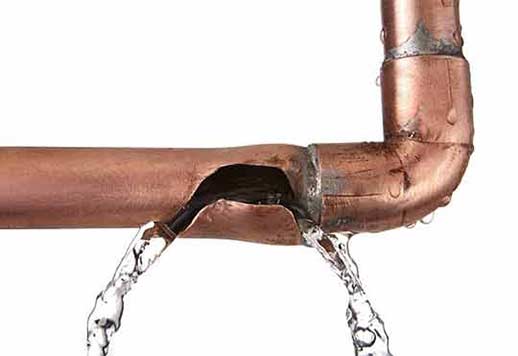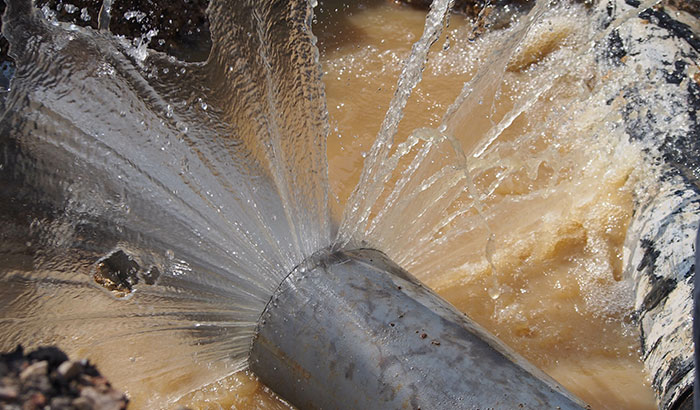Burst Pipe Insurance Claims: What You Need to Know for Water Damage Coverage
Burst Pipe Insurance Claims: What You Need to Know for Water Damage Coverage
Blog Article
Preventing Ruptured Pipes: Crucial Tips to Secure Your Plumbing
Preventing burst pipes is a crucial concern for property owners, specifically throughout colder months when the danger of cold is heightened. Executing strategic measures such as appropriate insulation, routine assessments, and maintaining regular interior temperatures can considerably lower the chance of pipeline failing. Furthermore, comprehending emergency treatments outfits home owners to react swiftly to potential pipes problems. Many are not aware of the specific susceptabilities that their pipelines may deal with. Checking out these susceptabilities can offer indispensable understandings into safeguarding your pipes system successfully.
Understand Pipe Vulnerabilities
Understanding pipeline susceptabilities is necessary for efficient plumbing maintenance and preventing costly damages. Numerous factors add to the sensitivity of pipelines to bursts, consisting of product make-up, age, and environmental problems. Older pipes, particularly those made from galvanized steel or polybutylene, usually weaken gradually, leading to boosted threat of leaks and tears.
Temperature changes can also substantially influence pipe stability. In cooler environments, water entraped in pipelines can freeze, broadening and exerting pressure on the pipe walls, which may inevitably lead to a burst. High water stress can strain pipelines, specifically at joints and bends, increasing the possibility of failure.

Insulate Pipes Correctly
Correct insulation of pipes is vital for protecting against cold and subsequent bursts during winter (burst pipe). Shielding your pipes system efficiently safeguards versus temperature drops that can cause expensive damage. Begin by identifying prone locations where pipelines are exposed to exterior temperatures, such as basements, attics, and outside wall surfaces
Use foam pipe insulation sleeves or wrap insulation tape around these areas to provide a protective obstacle. Ensure that all areas of the pipelines, specifically those with restricted heat exposure, get adequate insulation. Pay special focus to fittings and joints, as these are much more at risk to cold.
When protecting, it's vital to select products that meet regional building regulations and are appropriate for the certain setting. For example, fiberglass insulation is typically suggested for its thermal resistance residential properties - burst pipe. Additionally, take into consideration making use of heat cable televisions or tape in extreme conditions, which can be plugged in to supply supplemental warmth
Consistently evaluate insulated pipelines for any kind of signs of wear or damage, as jeopardized insulation can decrease its efficiency. By taking these aggressive actions, you considerably minimize the threat of pipeline bursts, guaranteeing a trusted pipes system throughout the cold weather.
Maintain Constant Temperature Level
A secure indoor temperature level is crucial for preventing burst pipelines during the freezing months. When temperatures decline, water within pipes can ice up, expanding and creating stress that may eventually cause the pipes to ruptured. To reduce this danger, house owners ought to maintain a regular temperature throughout their space, ideally no less than 55 ° F(13 ° C)Making use of a programmable thermostat can help take care of indoor temperatures effectively, guaranteeing that areas with plumbing remain warm also when your house is vacant. Pay learn the facts here now special interest to areas that are extra at risk to chilly, such as attic rooms, basements, and garages. Keeping cupboard doors open under sinks navigate to this website can likewise enable warmer air from the home to circulate around plumbing.
This minor circulation of water can avoid freezing by alleviating pressure within the pipes. By implementing these approaches, property owners can significantly decrease the danger of pipe bursts and safeguard their pipes systems versus the rough winter components.
On A Regular Basis Evaluate Pipes
Routine inspections of plumbing systems are essential for stopping burst pipelines and maintaining overall home stability. During these inspections, it is necessary to analyze visible pipes for signs of corrosion, leaks, or use.
In addition, evaluating joints and connections is vital, as these points are frequently vulnerable to leakages. Property owners need to also assess water pressure levels, as too much stress can strain the plumbing system and increase the danger of pipe ruptureds.
Take into consideration scheduling specialist plumbing evaluations at the very least as soon as a year, especially before wintertime, to ensure your system is planned for chillier temperature levels. Routine assessments not only help in recognizing prompt concerns but additionally foster long-lasting upkeep strategies that can enhance the life-span of your pipes system. By being proactive in your technique, you can secure your home versus the turbulent and expensive effects of ruptured pipes. Prioritizing plumbing assessments is an investment in your home's health and wellness.
Know Emergency Procedures
Recognizing emergency situation procedures is crucial for every homeowner, particularly after conducting routine plumbing evaluations. Being prepared for a plumbing emergency can substantially minimize damage and conserve costs.
Next, keep crucial tools useful. A plumbing emergency kit ought to consist of a wrench, bettor, and towels, in addition to a flashlight and a pail for little leaks. Furthermore, think about having the get in touch with info for a trusted plumbing technician readily available, must the scenario intensify beyond your control.
If you identify a leakage or burst pipeline, quickly shut off the supply of water and notify your plumber. In addition, record the damages with photographs for insurance coverage objectives. burst pipe. Be conscious of the signs of prospective pipes issues, such as unusual water pressure fluctuations or damp areas on wall surfaces
Ultimately, proactive knowledge and quick action are crucial in taking care of plumbing emergency situations, ensuring your home stays safeguarded and decreasing prospective damages.

Final Thought
In conclusion, preventing ruptured pipes demands a complex method that consists of understanding pipe susceptabilities, appropriate insulation, maintaining constant indoor temperature levels, regular assessments, and understanding of emergency treatments. By implementing these necessary methods, the risk of pipes failures can be dramatically decreased, consequently guaranteeing the longevity and performance of the plumbing system. Positive actions not just guard versus prospective damage but also add to overall water preservation and the defense of residential property.
In cooler climates, water trapped in pipes can ice up, putting in and increasing stress on the pipeline wall surfaces, which might inevitably lead to a ruptured. When temperatures decrease, water within pipelines can ice up, expanding and developing stress that might eventually cause the pipelines to why not try these out burst. By executing these approaches, home owners can substantially lower the danger of pipeline ruptureds and secure their plumbing systems against the harsh winter months elements.

Report this page